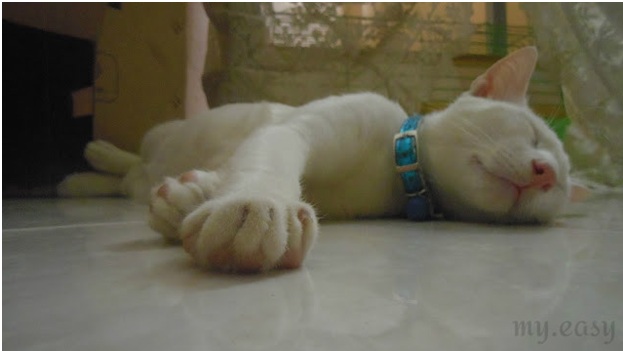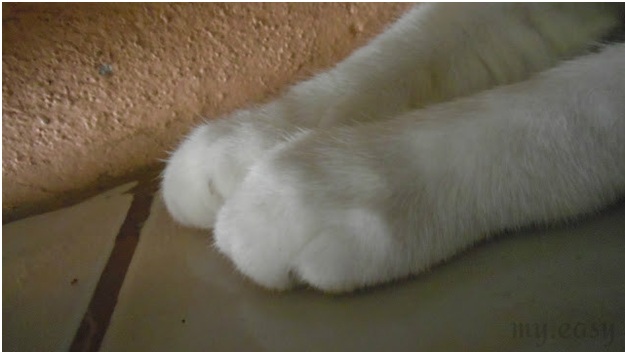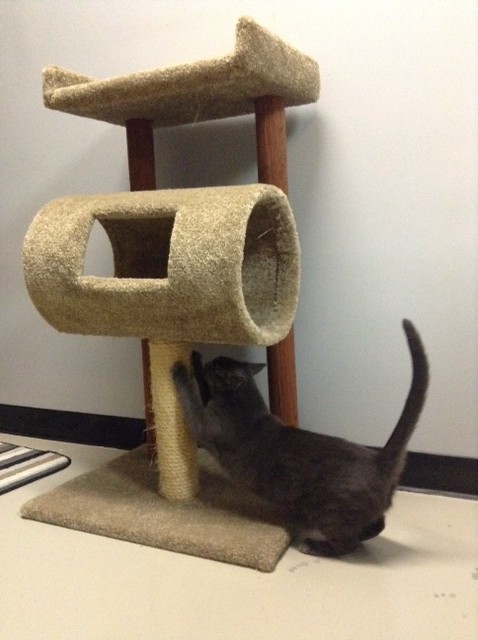Our cats can be those cute little fluffy angels that we want to cuddle, but they can also be those nasty menaces that destroy and scratch furniture around the house. However, whether you own a cat or cat sitting for someone, you should already know that scratching is natural for them. For some people though, cat scratches on a piece of expensive furniture are a no-no, so they consider declawing as an option. Also, they think that declawed cats would mean no harm to them. No more cat scratches and no more torn furniture.
What they don’t know is that declawing is more than just trimming the nails; it is a terrible procedure that would leave disgusting physical and psychological effects on you. Claws are an important part of feline physiology. They are used by your pets to catch prey, communicate, and protect themselves. Outdoor cats especially need their claws to survive. So before jumping into the declawing ship, let’s first learn about valuable information on cat scratching and declawing.
Scratching is a natural behavior
Cats start scratching usually around 8 weeks of age. This is normal feline behavior to remove dead husks on their nails, mark territory, and stretch their muscles. They do not scratch your sofas just because they want to tear them down like delusional cuties. It is a natural behavior that actually makes them physically and emotionally healthy.
Marking territory is important, especially in an outside setting. The markings allow other cats to know they are in a “certain area” already owned by another. This warning could save them from conflicts and real physical clashes.
Additionally, scratching is a stress reliever for felines. Whenever they are depressed or extremely excited, scratching helps them release those emotions and become healthy in the process.
Declawing is not nail-trimming
Declawing is considered a serious surgery that involves amputating the last bone of a cat’s claws. It is often compared to trimming the nails as humans do, but you should know that it is more than that. It is a painful procedure that has a painful and long recovery time. At most, declawed cats do not recover very well. That is why it is banned in England, Japan, and other European countries.
Declawing has its own horrors
Besides the excruciating surgery, recovery after declawing proves to be more painful and the repercussions of this procedure are more than physical horror.
- Declawed cats have to relearn how to walk. Since the removal of claws changes the foot structure, the cats have to become familiar with how to walk without them. There is also the possibility of nerve damage and regrowth which could cause pain and infection.
- Declawed cats tend to be more aggressive and become biters. Since they don’t have their claws for defense, cats resort to biting to protect themselves. This is especially concerning, and some people think that declawing could actually protect them.
- Declawed cats experience behavioral problems, like being fearful and depressed. They also start urinating and defecating outside of their litter boxes. You stripped them off a natural instinct when you amputate their toes. Cats are very good at hiding pain, but you should know it is not going to be a happy life for them.
What you should do instead
Instead of declawing, there are guidelines you can follow to save your cats from pain and discomfort, and also save your upholstery.
- Trim your cat’s nails. Make sure your pet is relaxed, before you start trimming. Press the toes to extend the claws and cut using the proper nail clipper for pets. Cut only the tip of the nail and make sure to avoid the vein. Sharp claws are the ones that destroy your furniture, and may also scratch your skin. Regularly trimming them would prevent these things.
- Provide scratching posts. Multiple posts around the house would allow your cats to scratch those instead of your sofas. Tough, sturdy, and tall posts are best to allow cats to scratch and stretch. You can also provide alternative scratching surfaces such as rough carpets and mats, or ready-made scratching beds or pads.
- Teach your cat to scratch on the posts you provided. Posts would become more attractive by putting catnip on them. Do you know how cats become crazy over those dried leaves? This will encourage them to scratch only on those.
It is an owner’s wish to make their pets happy and comfortable. But as house owners, they also wish to make the house and things in it as intact as possible. Remember that declawing is not a better option. Do the painless and right choice instead.





















